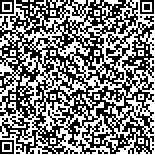| 引用本文: | 李雪伍,高瑞,黄艳斐,周龙龙,邢志国,王海斗,郭伟玲.铌酸钾钠无铅压电陶瓷掺杂及制备技术现状[J].中国表面工程,2023,36(2):1~20 |
| LI Xuewu,GAO Rui,HUANG Yanfei,ZHOU Longlong,XING Zhiguo,WANG Haidou,GUO Weiling.Research Status of Lead-free Piezoelectric Ceramic Doping and Preparation Technology of Potassium Sodium Niobate[J].China Surface Engineering,2023,36(2):1~20 |
|
| |
|
|
| 本文已被:浏览 1748次 下载 996次 |

码上扫一扫! |
|
|
| 铌酸钾钠无铅压电陶瓷掺杂及制备技术现状 |
|
李雪伍1, 高瑞1,2, 黄艳斐2, 周龙龙1,2, 邢志国2, 王海斗3, 郭伟玲2
|
|
1.西安科技大学机械工程学院 西安 710000;2.陆军装甲兵学院装备再制造技术国防科技重点实验室 北京 100072;3.陆军装甲兵学院机械产品再制造国家工程研究中心 北京 100072
|
|
| 摘要: |
| 铌酸钾钠无铅压电陶瓷因具有环境友好型、良好的电学性能、较好的居里温度等成为当前压电铁电材料的研究热点之一,广泛应用于科技、工业等方面。综述近年来铌酸钾钠压电陶瓷材料的研究进展,主要从金属离子及其氧化物掺杂、稀土离子,以及其他化合物掺杂等方面对铌酸钾钠的掺杂制备进行总结,从热压烧结、微波烧结及放电等离子烧结等方面对其烧结技术进行论述,从激光脉冲沉积技术、射频磁控溅射法等方面对其成形工艺进行综述。结果表明,对铌酸钾钠压电陶瓷进行掺杂制备及采取先进的烧结技术可以明显提升其电学性能,铌酸钾钠压电陶瓷薄膜和涂层的制备拓展了铌酸钾钠的应用范围,使其可以应用于国防、航空航天及通信等方面。最后对铌酸钾钠的发展趋势进行总结。主要从铌酸钾钠陶瓷的掺杂制备、烧结工艺及成形工艺等方面进行综述,对铌酸钾钠压电陶瓷在各领域的研究有一定理论与参考意义。 |
| 关键词: 铌酸钾钠 掺杂制备 烧结技术 涂层 薄膜 电学性能 |
| DOI:10.11933/j.issn.1007?9289.20220313001 |
| 分类号:TB381 |
| 基金项目:国家自然科学基金(52005511)和陕西省创新能力支撑计划(2021KJXX-38)资助项目 |
|
| Research Status of Lead-free Piezoelectric Ceramic Doping and Preparation Technology of Potassium Sodium Niobate |
|
LI Xuewu1, GAO Rui1,2, HUANG Yanfei2, ZHOU Longlong1,2, XING Zhiguo2, WANG Haidou3, GUO Weiling2
|
|
1.School of Mechanical Engineering, Xi’ an University of Science and Technology,Xi’ an 710000 , China;2.National Key Laboratory for Remanufacturing, Army Academy of Armored Forces,Beijing 100072 , China;3.National Engineering Research Center for Remanufacturing, Army Academy of Armored Forces, Beijing 100072 , China
|
| Abstract: |
| Piezoelectric ceramics are important ceramic materials for the conversion of mechanical and electrical energy and have an important function in our national economy and defense industry. Lead-containing ferroelectric piezoelectric materials are widely applied owing to their abundant storage capacity, good performance, and low cost. However, the current piezoelectric materials are lead zirconate titanate ceramics, which are harmful to the human body and environment. With the gradual advance of the green sustainable development concept, the improvement of environment-friendly lead-free piezoelectric ceramics has become an important research objective in the discipline of ferroelectric materials. Based on the requirements of human protection of ecological environment and the development of environmentally friendly materials, lead-free piezoelectric ceramics with potassium niobate have been widely used in science and technology, industry, military, aerospace, and aviation because of their properties, such as environmental friendliness, good electrical properties, and proper Curie temperature. They are considered to be one of the most likely materials to replace lead-containing piezoelectric ceramics, and have become one of the current focuses of piezoelectric ferroelectric materials research. The research progress of potassium sodium niobate (KNN) piezoelectric ceramic materials in recent years is reviewed in this paper, which summarizes the doping preparation of the KNN by metal and metal-oxide, rare earth ions, and other compound doping and discusses the hot pressing, microwave, and discharge plasma sintering technologies and the molding processes, such as laser pulse deposition technology and radio frequency (RF) magnetron sputtering. The results show that the sintering technology of KNN is not suitable for the sintering of sodium niobate. The doping of the KNN piezoelectric ceramics and advanced sintering techniques can significantly improve their electrical properties. The appropriate concentration of the metal ions in the doping promotes the grain growth of the KNN-based piezoelectric ceramics and constructs a multiphase coexistence structure at room temperature, which in turn improves the electrical properties of the KNN-based piezoelectric ceramics. Rare earth element doping generally occurs via an unequal substitution, reducing the internal stress and relieving the domain wall motion, thereby enhancing the electrical properties. Additionally, the use of other compounds in the doping permits the KNN ceramics to be applied in high temperature and medical environments, expanding their application field. Sintering can inhibit the volatilization of the alkali metals during the preparation of the ceramics, and hot-pressure sintering increases the driving force on the powder to obtain ceramics with better densities and well-developed grains, which effectively enhances the electrical properties of the ceramics. Microwave sintering shortens the sintering time and reduces the volatilization of the elements, which in turn improves the electrical properties of the ceramics. Spark plasma sintering, owing to its short sintering time, produces ceramic samples with a smaller grain size and increased density, which in turn improves the electrical properties of the ceramics. The surface morphology of the films prepared by the pulsed deposition technique is uniform and dense, and their electrical properties are good. Films with a dense and uniform microstructure are obtained by the sol–gel method after annealing at an appropriate temperature, and the electrical properties of the films are excellent. The preparation of thin films by the RF magnetron sputtering method requires an appropriate annealing temperature and atmosphere, which can promote grain growth, aid in the formation of dense films, and improve the electrical properties. The preparation of KNN piezoelectric ceramic films and coatings expands the range of applications of KNN in fields such as defense, aerospace, and communication. Finally, the contents of the paper and the development trend of KNN are summarized. This paper reviews the doping preparation, sintering technology, and molding processes of KNN ceramics, providing a theoretical basis and reference for the research of KNN piezoelectric ceramics in various fields. |
| Key words: potassium sodium niobate doping preparation sintering technology coating thin film electrical properties |
|
|
|
|

